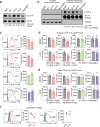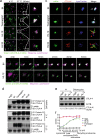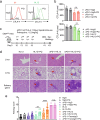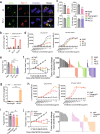Hijacking antibody-induced CTLA-4 lysosomal degradation for safer and more effective cancer immunotherapy
- PMID: 31267017
- PMCID: PMC6796842
- DOI: 10.1038/s41422-019-0184-1
Hijacking antibody-induced CTLA-4 lysosomal degradation for safer and more effective cancer immunotherapy
Abstract
It remains unclear why the clinically used anti-CTLA-4 antibodies, popularly called checkpoint inhibitors, have severe immunotherapy-related adverse effects (irAEs) and yet suboptimal cancer immunotherapeutic effects (CITE). Here we report that while irAE-prone Ipilimumab and TremeIgG1 rapidly direct cell surface CTLA-4 for lysosomal degradation, the non-irAE-prone antibodies we generated, HL12 or HL32, dissociate from CTLA-4 after endocytosis and allow CTLA-4 recycling to cell surface by the LRBA-dependent mechanism. Disrupting CTLA-4 recycling results in robust CTLA-4 downregulation by all anti-CTLA-4 antibodies and confers toxicity to a non-irAE-prone anti-CTLA-4 mAb. Conversely, increasing the pH sensitivity of TremeIgG1 by introducing designed tyrosine-to-histidine mutations prevents antibody-triggered lysosomal CTLA-4 downregulation and dramatically attenuates irAE. Surprisingly, by avoiding CTLA-4 downregulation and due to their increased bioavailability, pH-sensitive anti-CTLA-4 antibodies are more effective in intratumor regulatory T-cell depletion and rejection of large established tumors. Our data establish a new paradigm for cancer research that allows for abrogating irAE while increasing CITE of anti-CTLA-4 antibodies.
Conflict of interest statement
Y.L., P. Zheng and M.D. have equity interest in OncoImmune, Inc. which provided partial financial support for the study. The remaining authors declare no competing interests.
Figures








Comment in
-
pH-sensitive anti-CTLA4 antibodies: yes to efficacy, no to toxicity.Cell Res. 2019 Aug;29(8):601-602. doi: 10.1038/s41422-019-0198-8. Cell Res. 2019. PMID: 31300731 Free PMC article. No abstract available.
References
Publication types
MeSH terms
Substances
Grants and funding
LinkOut - more resources
Full Text Sources
Other Literature Sources
Medical

